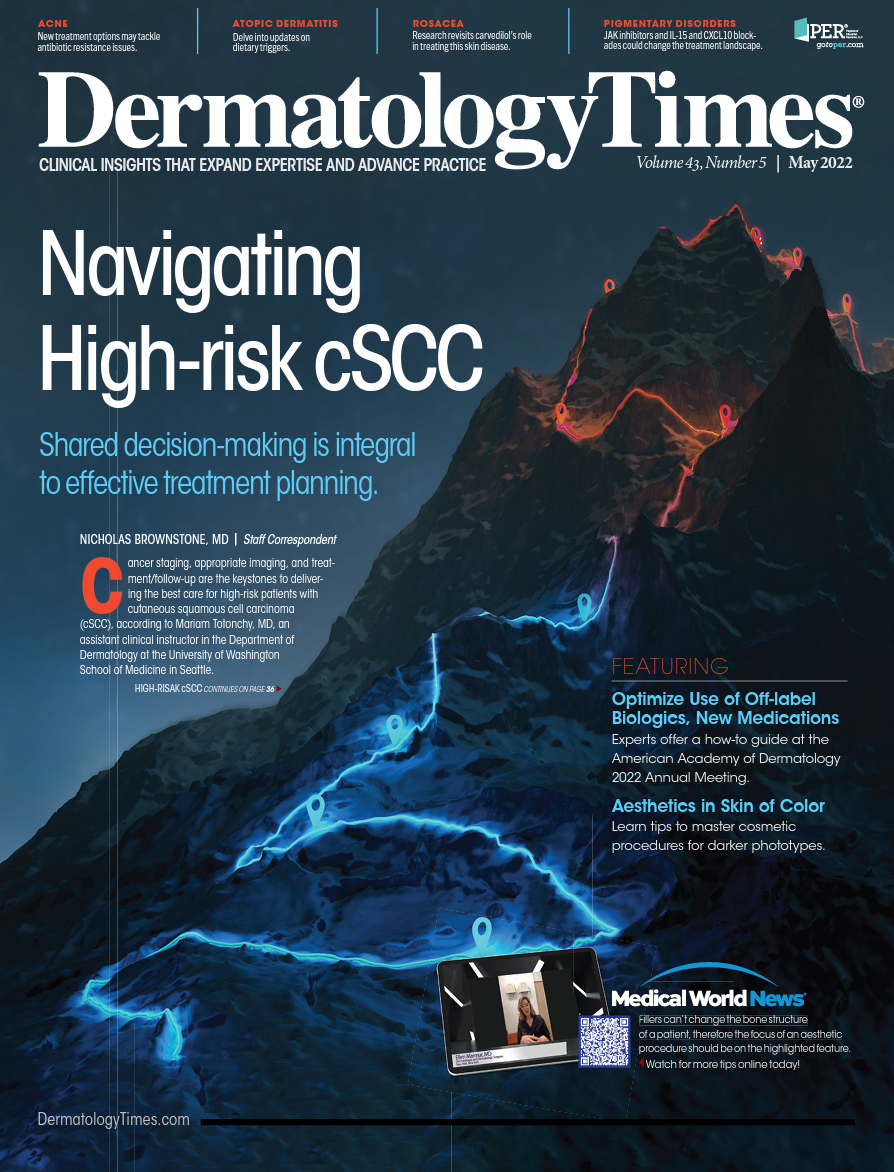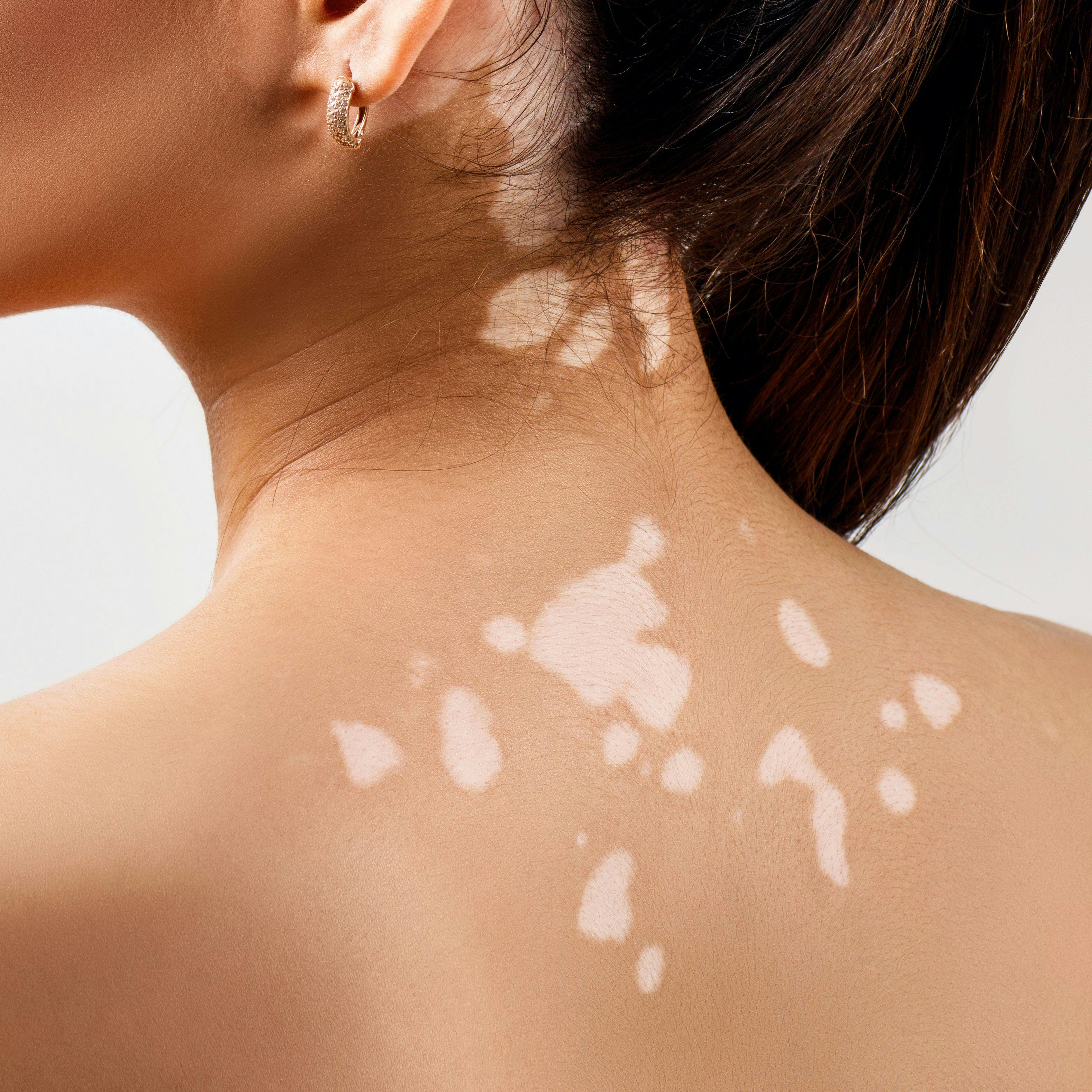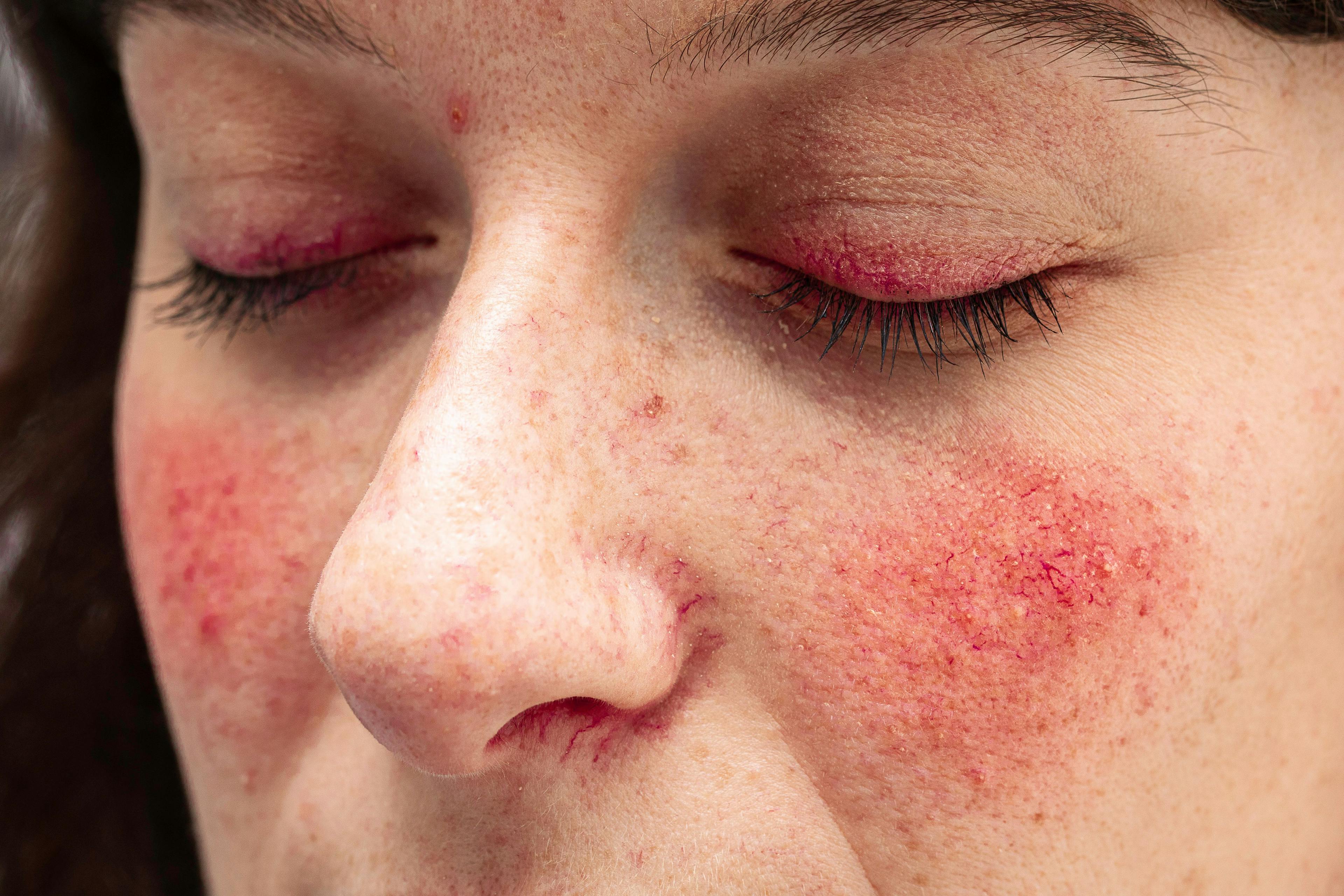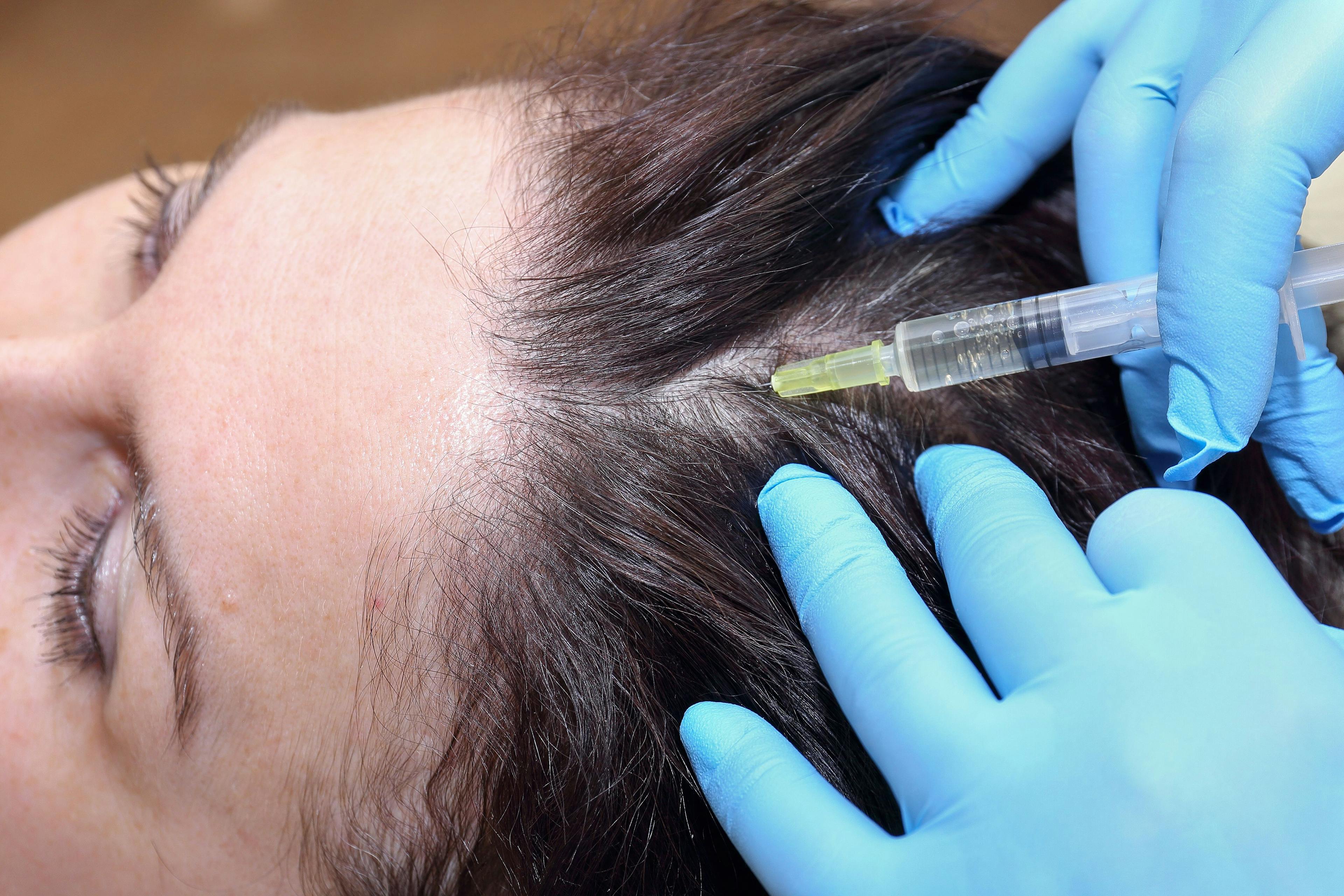- Acne
- Actinic Keratosis
- Aesthetics
- Alopecia
- Atopic Dermatitis
- Buy-and-Bill
- COVID-19
- Case-Based Roundtable
- Chronic Hand Eczema
- Chronic Spontaneous Urticaria
- Drug Watch
- Eczema
- General Dermatology
- Hidradenitis Suppurativa
- Melasma
- NP and PA
- Pediatric Dermatology
- Pigmentary Disorders
- Practice Management
- Precision Medicine and Biologics
- Prurigo Nodularis
- Psoriasis
- Psoriatic Arthritis
- Rare Disease
- Rosacea
- Skin Cancer
- Vitiligo
- Wound Care
Publication
Article
Dermatology Times
Cut the Learning Curve for Acne in Skin of Color
Author(s):
A clinician updates the conventional wisdom on acne’s variations in patients of color, offering pearls from her practice and practical takeaways from recent research.
Thanks to more than 3 decades of robust growth, the body of literature on acne in skin of color has defined many of the obvious and subtle variations of this skin disorder in Fitzpatrick IV, V, and VI skin types and explored theories on treatments from physicians around the world. In this exclusive interview with Dermatology Times®, Adebola Dele-Michael, MD, medical director of Radiant Skin Dermatology and Laser and an assistant professor of dermatology at Mount Sinai, both in New York, New York, shared recommendations for putting basics and breakthroughs to work to help patients of color safely achieve and maintain clear skin.
The basics of diagnosis: Look for comedones.
The deep dive: “Diagnosing acne in skin of color can be tricky. It is not just about comedones,” Dele-Michael said. “The dermatologist has to be aware that the sequelae of acne, such as postinflammatory hyperpigmentation [PIH] and keloids or hypertrophic scarring, can distinguish acne on darker skin types.”
Because not all patients of color present with bumps, exams are more complex. “If the patient is wearing makeup, have them remove it,” Dele-Michael advised. “Then proceed with the exam. A dermatoscope can be helpful in identifying the difference between an open comedone, which is a blackhead, and an acne scar because it reveals more about the skin structure than the naked eye can see. The physician also has to feel the skin to discover any lesions beneath the surface. It is especially important to palpate the affected area when the patient has nodulocystic acne to make sure there are no keloids on top of nodules or cysts. Examining skin texture is important to avoid misdiagnosis with rosacea. Skin that has more sebaceous activity looks like an orange peel, and that can clue you in to the fact that there is underlying inflammation. Then, of course, the dermatologist needs to look for excoriation and cavitation. If they find a divot in the skin, they need to determine whether it is the result of a blemish or acne scarring and whether there has been loss in the dermis.”
Dele-Michael advised adding drill-down questions to the standard patient history to aid diagnosis for Fitzpatrick IV, V, and VI skin types. “For some very dark skin, it is hard to pick up on blushing and, even if that’s possible, to distinguish among blushing, redness, and background erythema,” she noted. “I ask my patients whether their cheeks feel very warm in certain circumstances, whether flares correlate with their menstrual cycle, and whether lesions are painful.”
The basics of treatment: Clear the lesions.
The deep dive: Recent study results showed that patients of color often rank PIH, discoloration, and scarring as their top concerns regarding acne treatment rather than just eliminating “bumps.”1 “Most of my patients are bothered most by discoloration, blemishes, or the PIH that results from acne,” Dele-Michael said. “If I just focus on clearing the lesions, I may not be meeting patients’ expectations.” Because acne can have long-term effects such as discoloration, keloid formation, and scarring, Dele-Michael urged dermatologists to be aggressive in treatment choices for patients of color.
“Consider oral medications such as isotretinoin—as long as the patient is not pregnant or planning on starting a family soon—spironolactone, doxycycline, and minocycline,” she said.2 “The goal is to curb the disease before scarring develops and before complications relating to PIH become more established and more chal- lenging and expensive to treat.”
Once the oral regimen is completed, she suggested continuing the patient on topicals paired with “a very light peel.” “Peels can help address discoloration, but here is where you do not want to be aggressive. You don’t want to go too deeply into the skin,” she said. She prefers peels with lactic acid: “In these cases, those with salicylic acid can be a little too ‘spicy.’ I’m also combining chemical peels with new products such as Cyspera [Scientis], which addresses discoloration and hyperpigmentation without corticosteroids, retinoic acid, and hydroquinone. This combination approach helps shorten the treatment course.”
The basics: Lasers are useful to treat scarring.
The deep dive: “Lasers and energy devices have really changed the way I treat my patients with acne and acne scarring,” Dele-Michael said. She noted that in addition to a growing menu of lasers that safely treat skin of color, technologies such as radiofrequency devices combined with microneedling can provide options for treating scarring and PIH. Some that she has used to help restore collagen and elastin around scarring “without complications of discoloration” and that caused little or no thermal damage include Morpheus8 (InMode), which uses 4 different microneedling tips to penetrate up to 8 mm, and Genius (Lutronic), which has presets for all skin types and multiple body areas.
“As for lasers, sometimes I will use a Q [quality]–switched laser, which is something that can help with pigmentation and discoloration on skin of color. Generally, dermatologists should be looking for a laser treatment—perhaps a micro- second laser such as Neo Elite [Aerolase], which helps us stimulate collagen safely in skin of color and, for my patients, also works to treat acne and correct acne scarring.”
Aftercare plays a big role in the success of chemical peels or light/energy treatments. It all comes down to hydration. “Currently, I’m get- ting good outcomes with CO2Lift [Lumisque] masks based on carboxytherapy [carbon dioxide therapy] that help bring more oxygen to the face and seal in hydration. They’ve been reduc- ing treatment and recovery time for my patients,” she said.
For at-home use, in addition to her proprietary product, she recommends products such as those from La Roche-Posay, CeraVe (L’Oréal Groupe), and Neutrogena (Johnson & John- son). “I advise patients to stay away from prod- ucts that have benzoyl peroxide or salicylic acid for home use because sometimes they can be a bit too much. They can actually damage the skin microbiome,” she said.
MANAGE LIFESTYLE ISSUES IN ACNE CARE PLANS
Addressing the underlying physical causes of acne and treating key issues for patients of color—discoloration, hyperpigmentation, and hypopigmentation—and minimizing scarring are essential aspects of any care plan, but lifestyle and psychological factors need to be considered, according to Dele-Michael. Her talking points include the following:
How much stress is the patient experiencing? “With all the pressures people are under, this is a big contributor to acne,” she said.
What are the staples in the patient’s diet? “Hormonal acne is on the rise in people of color,” she said. “I’m not claiming that any one diet will eliminate acne, but we do know that the very high sugar intake in some people’s diets can lead to insulin resistance, which can affect their hormone profile. That, in turn, can cause a form of polycystic ovarian syndrome, which is associated with insulin resistance. If a patient’s acne is driven by what they eat, it can be difficult to get hormonal acne under control unless they’re willing to change their diet dramatically.”
How much does acne affect the patient’s quality of life? “This is important to ask,” she noted. “On the indices, the patient’s case may be mild, but for that person, it could seem severe. My practice is in Manhattan. I have a lot of patients who are actors. For them, having 1 acne cyst on their face may seem severe. Meanwhile, a teenager may not be really bothered by flares because most of their classmates have acne as well. When we’re coming up with our treatment regimen, understanding how that person experiences acne can really help treat them correctly. I may actually upgrade patients from mild to severe because of the weight of their perception.”
ADD THIS QUESTION TO STANDARD HISTORIES FOR PATIENTS OF COLOR
“I want to know the vitamin D intake of my patients of color,” Dele-Michael said. “I especially want to look at the results of the 25-hydroxy vitamin D test to get an accurate profile of any deficiency.”
Why?
The darker the skin, the higher the risk of deficiency: “Vitamin D is connected with autoimmunity, and patients may develop autoimmune diseases if their vitamin D levels are low. Since the start of the pandemic, there’s been a very high risk and very high rate of incidence of people walking around with single-digit vitamin D levels, which is actually dangerous.”
Vitamin D levels of less than 30 nmol/L, Dele-Michael said, could make the body resist treatment, whether for acne and hidradenitis suppurativa or psoriasis: “Conditions such as hair loss also become more difficult to treat.”
Deficiency is higher in skin of color because the melanin in darker skin types blocks the skin’s ability to process and synthesize vitamin D, Dele-Michael pointed out. That’s becoming more of a problem with urban patients of color spending more hours working indoors, she said.
“The other key connection here is that cow’s milk is a source of vitamin D, but a lot of people of color are lactose intolerant,” she pointed out. “So, we have a situation where the melanin in darker skin is block- ing vitamin D synthesis. People of color have been spending more time indoors—first because of the pandemic and now because of work demands—so we’re not getting enough sun to synthesize vitamin D in our skin. We’re not able to drink milk because we’re not able to process it properly...so our diet is vitamin D deficient. The net result is that these deficiencies can lead to really challenging skin conditions that are not improving with optimal treatments.”
Dele-Michael’s repletion recommendations: “The body of recent research has shown that daily supple- mentation is better than bolus supplementation,” she said. “But if someone is deeply deficient, just give them the prescription-strength bolus. I usually start patients whose vitamin D levels are less than 30 [nmol/L] on 50,000 international units [IU] once a week. Once they are replete, I would recommend that they go on 2000 to 5000 IU daily. I always tell my patients, jokingly, that they have to continue vitamin D supplementation unless they move to the beach.”
References
1. Callender VD. Management of acne in skin of color patients. Presented at: Fall Clinical Dermatology Conference; October 21-24, 2021; Las Vegas, NV.
2. Draghici CC, Miulescu RG, Petca RC, Petca A, DumitraŞcu MC, Şandru F. Terato- genic effect of isotretinoin in both fertile females and males (review). Exp Ther Med. 2021;21(5):534. doi:10.3892/etm.2021.9966

Newsletter
Like what you’re reading? Subscribe to Dermatology Times for weekly updates on therapies, innovations, and real-world practice tips.


























